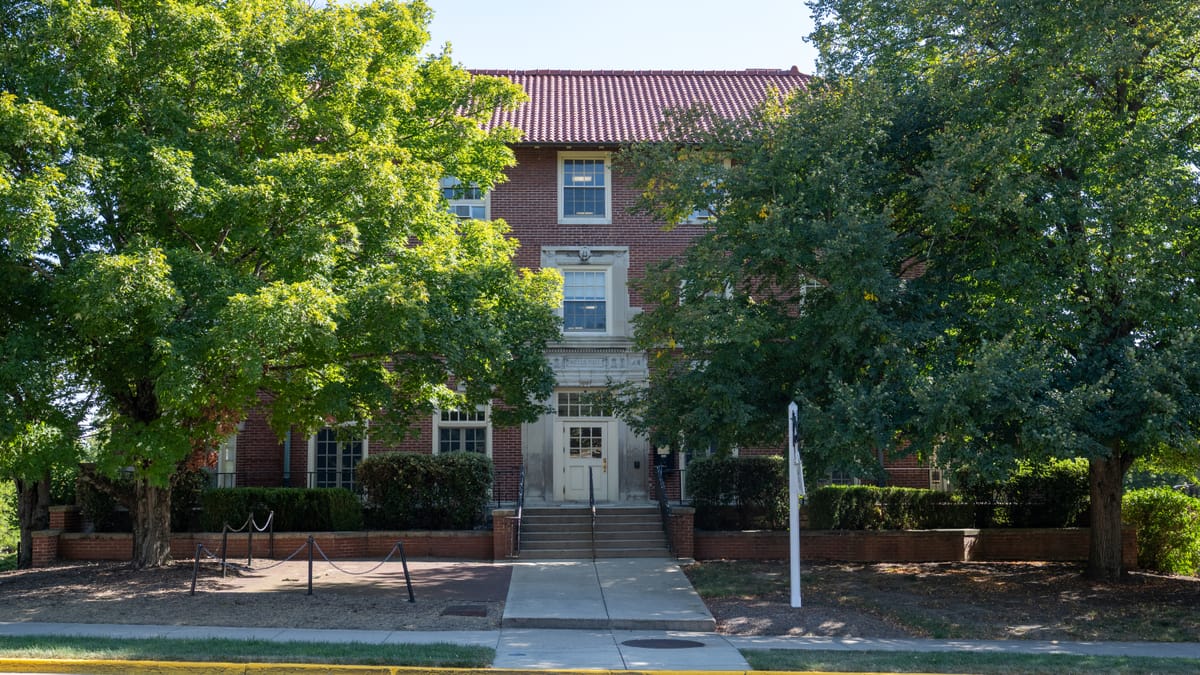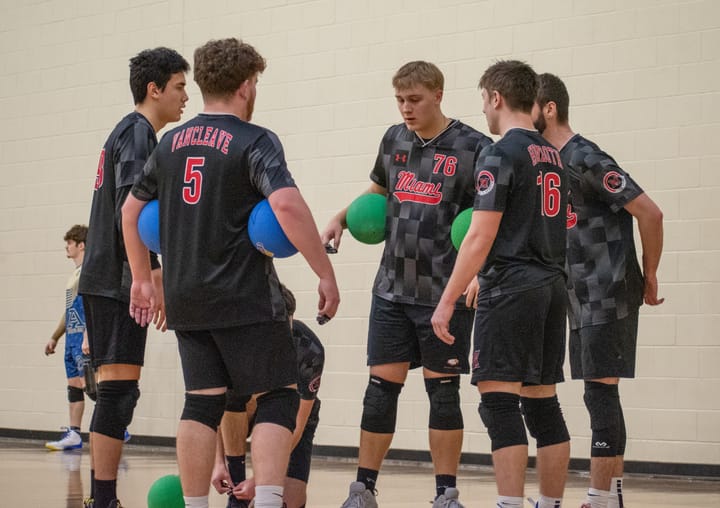Miami issues RFQ, plans to demolish 3 campus buildings
Joyner House, Wells Hall and Williams Hall are on the chopping block.

Miami University issued a request for qualifications (RFQ) for design services on a project that would remove three Oxford campus buildings, including Williams Hall, Wells Hall and Joyner House for which responses were due in early July.
No resolution has been brought before the Board of Trustees for approval yet. The next meetings are on Sept. 16 and Sept. 17.
Cody Powell, associate vice president for facilities planning and operations, told the Oxford Free Press the university created a long-range housing master plan over a decade ago which analyzed its residence hall structures to determine whether renovations were needed.
As part of the plan, Powell said the university determined it would not make sense financially to renovate Wells Hall. The building was used sporadically throughout the COVID-19 pandemic for quarantining students but has been otherwise out of commission as a residence hall since around 2019.
Williams Hall, Powell said, was originally built to support the university’s radio program, which has changed over the years. He said the building overall is inefficient and also isn’t worth renovations.
“It’s a pretty specific building for a particular purpose that would make it very costly to renovate. And the quality of the construction is such that we wouldn’t get a lot of value out of that building,” Powell said.

Currently, Williams Hall is being occupied by the Department of Media, Journalism and Film (MFJ), although he said this program would be relocated to Bachelor Hall, which is currently being renovated. Powell said the university is anticipating renovations to be completed at Bachelor Hall before May 2026 commencement and ready for courses to move in before the fall semester.
Bachelor Hall has also been out of commission for about a year during construction, which Powell said has included “substantial modifications,” as well as deferred maintenance projects. When MJF moves to Bachelor Hall, the English Language Program, American Culture and English, Humanities Center and the Ohio Writing Project will be joining them.
Powell said of Joyner House, “It’s a small, residential property, and we have several of those on campus that were originally some form of residence that aren’t in great shape now and are not ADA (American Disabilities Act) accessible. They have a lot of deferred maintenance and don’t function well, really.”

Up to this point, Powell said Joyner House has been used as an office building.
When asked for estimates of how much it would cost to repair or remodel the buildings, Powell said, “We evaluate each building and consider questions that may include how the building is to be used, the quality of the original construction, the condition of the building, historical significance, cost per square foot anticipated for the type of proposed use, size and future staffing models when determining if we should renovate a building.”
Powell added he doesn’t “need” to develop an estimate for renovating some of the facilities and said, “The type of work required to achieve the living or work experience we want to offer leaves us with a combination of expensive construction only to have a finished product that is considered substandard for the outcomes we expect.”
For example, he said Joyner House, having been built as a residential property, doesn’t have the amenities needed to function as an administrative office, and spending university funds to restore it and make it ADA accessible, sustainable and efficient is “not a good use” of funds.
Powell said the university has estimated the demolitions, including surrounding utility projects and prepping the area for future uses will cost around $7 million, although as of last week, it was still waiting on the design from the RFQ for an official estimate.
Powell said there are steam lines which feed into Williams Hall and Wells Hall that made it difficult for the university to complete its steam to hot water conversion because of the way they’re configured for the buildings. As part of the utilities projects, he said once the buildings are demolished, the steam pipe will be removed so the conversion can be completed in that section of the campus.
“And so that's part of our sustainability initiatives. That's part of our conversion to geothermal. In this case, it isn't geothermal directly, but it's simultaneous heating and cooling,” he said.
The utilities projects also include several upgrades within Armstrong Student Center’s mechanical systems to support a conversion from steam to hot water, as well as some piping reconfigurations closer to McGuffey Hall.
Overall, he said the university is hoping to have the three buildings removed and the utility work completed over the summer of 2026.
Currently, Powell said the university doesn’t have any structures planned for the site where Williams Hall, Wells Hall and Joyner House currently are at 350 S. Oak St., 301 E. Spring St. and 321 E. Spring St., respectively. But, he said the intent is to consider the lots for “academic program growth.”
“If we have particular academic programs that need to expand, that would be one of the areas on campus that we would look toward either constructing new buildings or building additions and so forth,” he said.
For example, Powell pointed out the university recently constructed the Clinical Health Sciences and Wellness Facility on Campus Avenue, which he said tagged that part of campus as the “health district.”
“The medical fields are certainly in demand. And if you know we were to expand our academic programs in those areas, that might be an area that makes sense for us to grow the campus,” he said.
Historical significance
Williams Hall was constructed in 1959 and contains two computer classrooms, three traditional classrooms, a film editing lab, film-editing and audio-editing studios, a broadcast news sound set and master control studio and a radio studio, according to the university’s website.
Wells Hall was constructed in 1923 and is named after William B. Wells, an Oxford resident who made the land purchase possible, according to the website. According to a “Campus Heritage Plan” prepared for the university in 2009, Wells Hall was originally a women’s residence hall.

Joyner House was built in 1910 and was the residence of Miami professor Fred Bunyan Joyner. Joyner was a professor of American history from 1922 until 1965, and a scholarship was created in his memory. After the house was sold to the university, it was used as an office building for financial aid services and the School of Fine Arts, according to a form filed in the Ohio Historic Preservation Office from 2008.
Currently, two of the buildings, Wells Hall and Joyner House, reside within the University Historic District as mapped out by the City of Oxford’s Historic and Architectural Preservation Commission (HAPC).
Sam Perry, community development director and city staff person residing over HAPC, said of the demolitions, “We had known that this was coming, and the city, HAPC, has been trying to kind of let the public know as well about the value of historic architecture in the community, whether it’s on or off campus.”
Perry said he has already met with Powell and was told about the demolitions. He said he asked if the university would be willing to gift Joyner House to be relocated somewhere in Oxford.
“The loss of those buildings around the central quad, kind of on the other side of the street from the central quad, would be unfortunate. But we also realize that the university is trying to do its best to manage the, steward the resources that it has,” Perry said.
Perry said buildings being designated as part of the university’s or the city’s “historic districts” is primarily “honorary.” He said Joyner House’s record in the Ohio Historic Inventory is also simply a survey of findings and does not designate it as a national landmark or on the National Register of Historic Places.
Powell said the university works “closely” with the City of Oxford to partner on its projects that may impact the broader community. While preserving Miami’s heritage and maintaining a “historical look and feel” on campus is important to the university, Powell said, “It’s impossible for us to maintain every building in our portfolio in perpetuity.”




